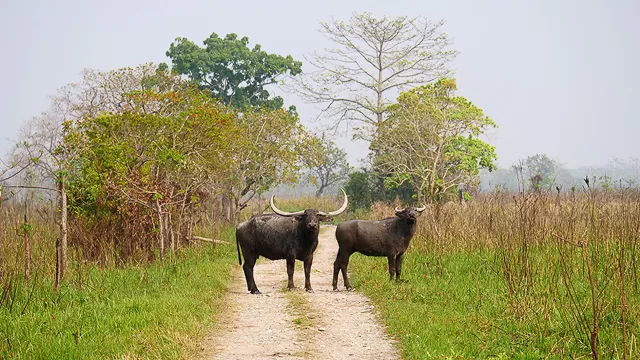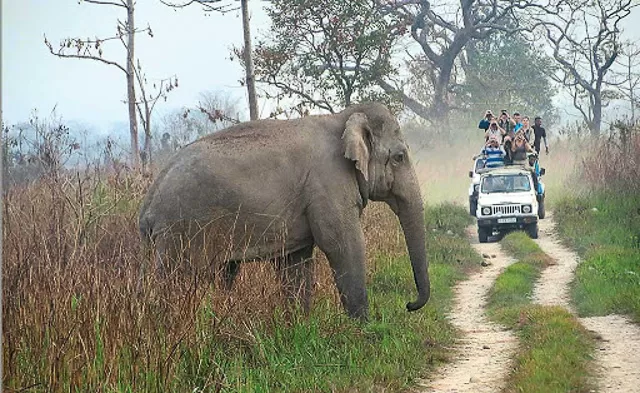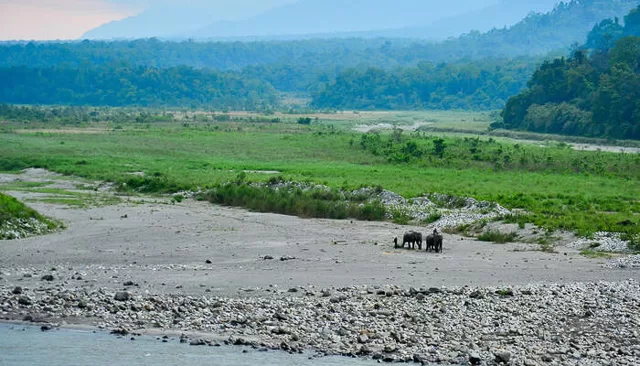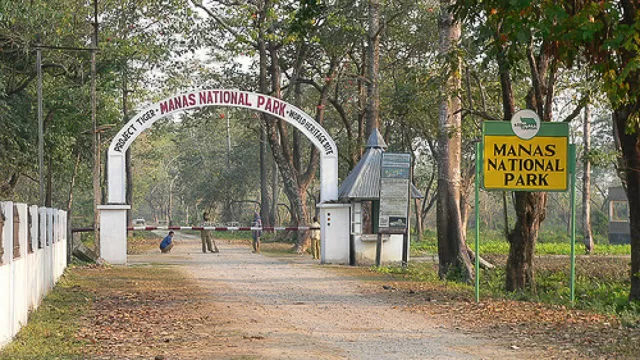About
Top Experiences
Type of Journey
Subscribe to newsletter and stay updated
Read about our travel expeditions, new destinations, new pictures, latest trip schedules
The Manas National Park is a grassland and jungle ecosystem of extraordinary elegance set against the magnificent Eastern Himalayas. Along with other rare and endangered species, some of the most well-known species that call this beautiful environment home include tigers, elephants, golden langurs, and Bengal Floricans. A timeless scene is provided by the Manas National Park and its woodland extensions on both sides of the river. Visitors can unwind at Mothanguri’s forest rental property while elephants might discreetly materialize on the other bank, creating the ideal air of etherealism. Recognized as a UNESCO World Heritage Site, the Manas National Park is home to wild buffalos, elephants, tigers, rhinos, and the maximum number of endangered species in India, as listed in the IUCN Red Book.
OVERVIEW
Location: Dist Baksa, Gobardhana, Assam, India
Nearest Airport: Guwahati Airport
How to reach: 3.5 hours drive from Guwahati airport
Famous for: Wildlife safaris
Best time to visit: November to April
WHAT TO SEE
Mammals:Tigers, Indian leopards, Indian elephants, Indian rhinoceros, Indian gaurs, Asian water buffaloes, barasingha, clouded leopards, Asian golden cats
Birds: Greater Adjutant, Black-tailed Crake, Red-headed Trogon, Swamp Francolin, Wreathed and Rufous-necked Hornbill, Marsh and Jerdon’s Babblers
22 of the 41 Indian species deemed to be “highly endangered” are found in Manas. Previously widespread, rhinos are now extinct, and now, wild buffaloes and elephants rule the landscape. The Asiatic buffalo is one of Manas’s greatest attractions. Huge tuskers stroll across the river that separates Bhutan and the subcontinent in this area. While tigers and leopards are challenging to see, finding a clouded leopard requires good fortune.

The golden langur and the capped langur can be seen on the Bhutanese side of the river among the local monkeys. Due to their innate shyness, both species prefer to hang out in tall trees where they are safe from predators. The golden langurs stand out against the blossoming foliage. However, it is possible to row across the river at its narrowest point to the forests of Bhutan in order to view them. Both the Hoolock gibbon and the sluggish loris are uncommon. Despite being scarce as well, Assamese macaques can be found in big groups in the island’s river.

Some other wildlife creatures include the hog deer or pada, the barking deer or muntjac, the chital, and the sambar. The swamp deer is seen in infrequent pockets. Though the sloth bears tend to stay in densely forested areas, they can be seen at the time of dawn and dusk. Around the rivers, it’s easy to spot wild pigs and occasional otters.

The Manas National Park has a diverse habitat that is ideal for specialized birds. With the largest population of the endangered Bengal Floricans in the world, Manas is also excellent to see the Great Hornbill. TheManas National Park lists around 380 species, and Bhutan’s hilly terrain can add a hundred to that total. The top birds to look for are the Greater Adjutant, the Black-tailed Crake, the Red-headed Trogon, the Swamp Francolin, the Wreathed and Rufous-necked Hornbill, the Marsh and Jerdon’s Babblers, the Pied Harrier, the Rufous-rumped and Bristled Grassbird, the Hodgson’s Bushchat, the Rufous-vented Laughingthrush, the Finn’s Weaver, the Ibisbill, and a variety of foothills species.

The best way to explore the natural flora and fauna of the Manas National Park is by opting for a jeep safari. The local forest department approved the open-air jeep safaris- however, a forest guide must accompany the guests.